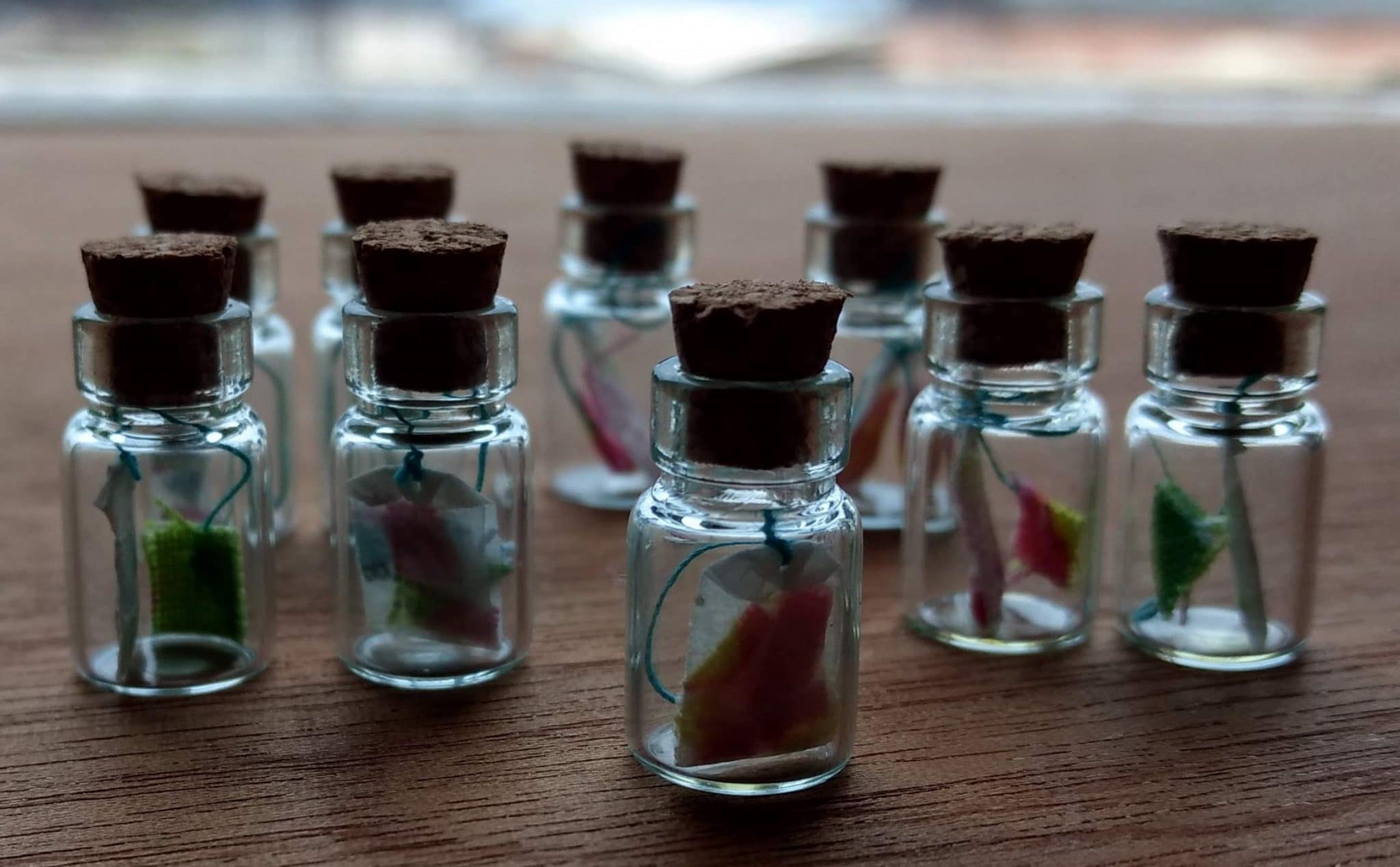
Paper Connection was thrilled to catch up with Mimi King as her career evolves with new projects soon-to-be announced on Mimi’s Instagram.
A Deep Love for Slow Processes, Strength of Commitment, and Lifting the Community
Mimi’s work sparks joy while raising money to support BIPOC (Black and Indigenous Person/People of Color) and those experiencing food insecurity.
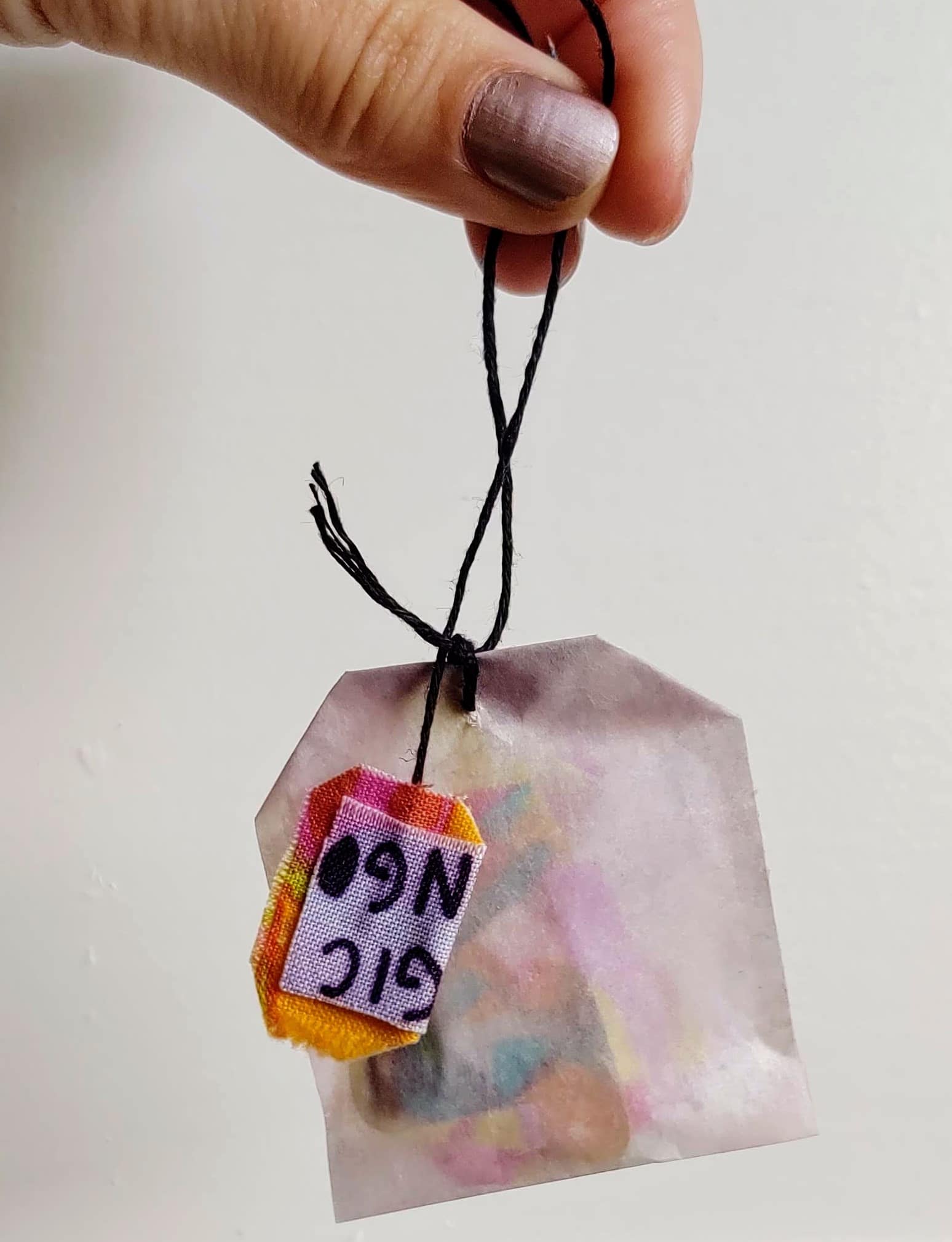
Q+A
PCI: Mimi, how would you define what you do?
MK: I am a printmaker and analog collage artist, I use a combination of intaglio, monotype, and fabric.
PCI: Can you share insights into your process and current studio projects?
MK: There are always about ten different projects going at once to allow space to think through each piece and keep myself active. One of my core beliefs is that we as individuals cannot rise unless we use our skills, time, and/or money to lift our community. To that end, I’m working on a couple of projects to support communities in need. The Cups of Cheer Project is a collection of small gampi “tea bags” filled with recycled cotton fabrics which can be used as bookmarks or framed wall art. 80% of proceeds go to Feed More, an organization providing food to anyone who doesn’t have access to healthy options. Once a month, I auction an original collage on a cradled board, donating 80% of proceeds to Girls For A Change, who “empower young women to design, lead, fund, and implement social change in their own neighborhoods”. I plan to expand this further in the future, so I can support more organizations like these.
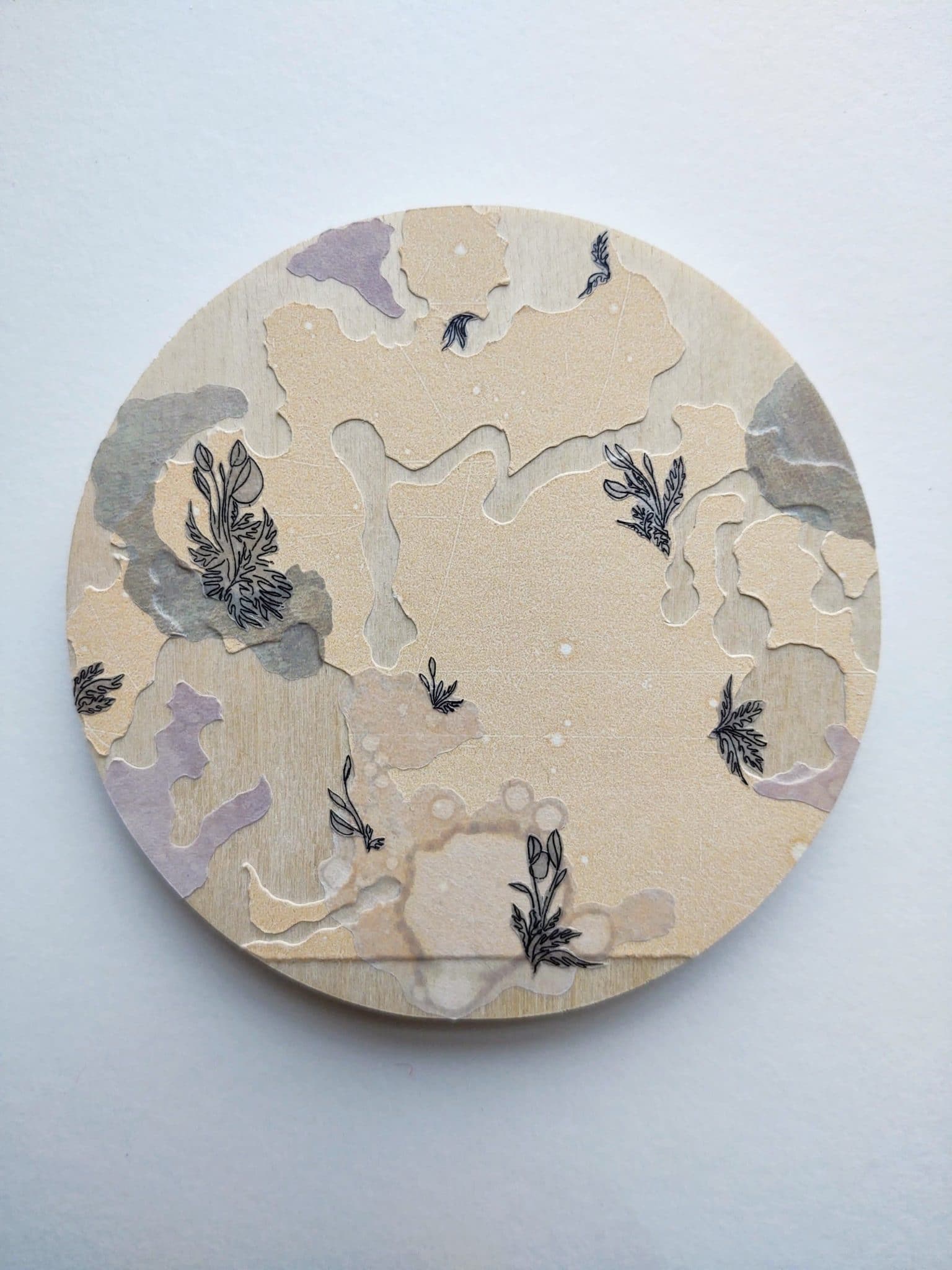
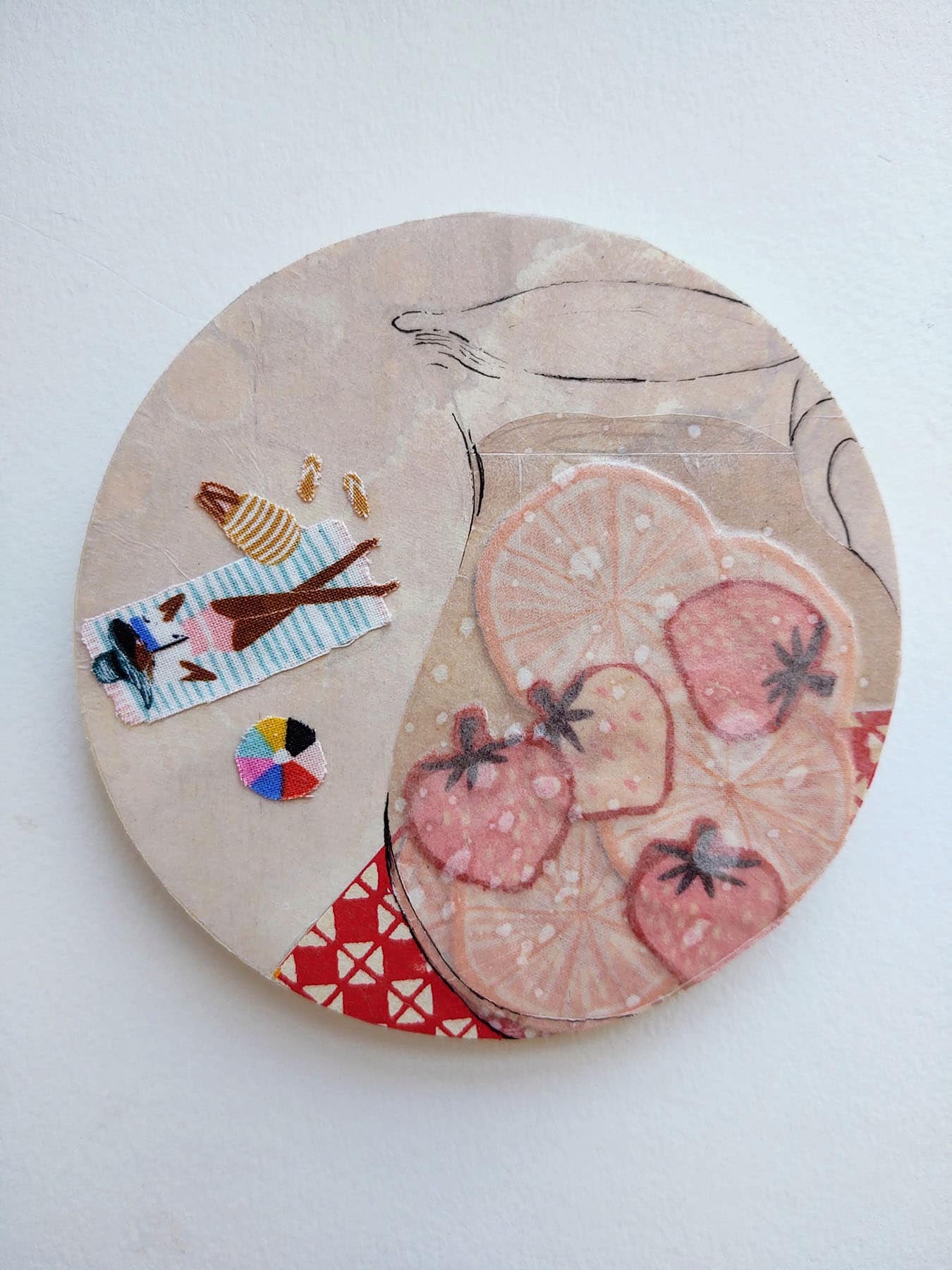
PCI: Can you speak about your life trajectory and influences that brought you to this place in your artwork and/or creating your current works?
MK: Growing up in a working class family prepared me for the print studio more than I ever thought. I stepped into printmaking with an ethic of not shying away from hard work and the understanding to take the time to do something right yields far better results than simply focusing on efficiency and speed. From soaking the paper, to mixing the ink, working in the print studio teaches one to appreciate the process.
I’ve always admired the richness of the arts and culture of Japan, especially coming from a country less than 250 years old. Studying abroad in Hamamatsu and the Kansai region will always be one of my most treasured life experiences. One fall pottery class, my professor reminded me many times to go slowly, to enjoy the learning process. “少しずつ, 少しずつ” (sukoshizutsu, sukoshizutsu, little by little, slowly), he’d say throughout the day, something I tell myself when I hurtle full-on into a new technique. The dedication to craft, to learning a skill gradually and correctly is a Japanese practice I am continuously building into my studio practice.
Nearsightedness has played a large role in the way I view the world. I lean in, hold things close to my eyes, seek out the nuances of a leaf, a flower, a brick wall, moss. I create tiny details in my work as a way of sharing the joy I feel daily when my world moves from impressionism to clarity using visual aids.
PCI: Which artist/people in your life most influenced and inspire you and in what way?
MK: Both of my parents are very artistically minded, my dad is a fabricator and inventor, he can make anything. Whenever I have a building project or concept for a new way of presenting a piece, he’s the first person I talk to. My mom taught me many of the tricks I still use to draw landscape elements; I remember asking her to “help me make it look real” because I didn’t like the way we drew trees in kindergarten. “Broccoli trees” just didn’t do it for me.
I didn’t really approach art seriously until I reached university. I have Tanja Softic, my former printmaking professor, to thank for my printing skills and love of paper. She teaches me so much, constantly. We have very different printmaking styles, but whenever I help print one of her editions, I’m thinking the entire time of how I can implement aspects of the way she builds up images. The way I layer prints with hand coloring and collage really comes from watching her chine collé and collaging elements onto finished prints, especially chiyogami pieces.
PCI: Can you describe the importance of paper in your work and what type of paper (medium) you use most?
MK: Paper is a truly remarkable substrate – it is lightweight, easy to store and transport, it can be soft, hard, molded, dyed, drawn/printed on. Paper offers me a freedom other mediums do not as readily. If a piece isn’t satisfactory, I can slip it in a drawer for a while, pull it out, cut it up, and use it as an element of another collage. I most often reach for Japanese papers, gampi for its translucency and wonderful way of holding ink on the surface. It is ideal for lightweight building and handles watercolor very well. Chiyogami, yuzen, and katazome are wonderful for collage, the pops of color and weight differences lend well to creating depth in collage. While I’ve been playing with the contrasts between cotton fabrics and paper recently, I will always come back to paper.
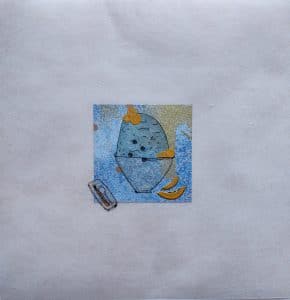

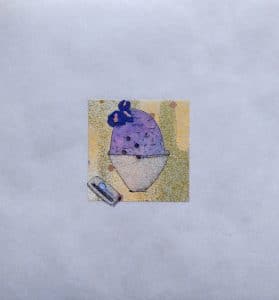
PCI: Can you talk about your interest in collage vs straight up printmaking techniques? Can you reflect within your work and beyond?
MK: My use of collage came about as a way to undermine my inner critic, who is always quick to remind me that I “can’t draw”. If I “draw” through collage though, I’m not actually drawing and find myself better able to translate the form of the object from 3D to 2D. I also began using collage at a time when I couldn’t access the print studio with the aquatint boxes or etching baths. Now, I use collage to build layer, depth, shadow, texture – it’s a tool that enhances straight up printmaking techniques. This gives me the freedom to build an image and explore the physicality of paper. Japanese papers, due to their strength and translucency, have been perfect for delving into this concept further. One of the first things I notice when looking at the leaves of a tree or petals of a flower is their translucency in light and the shadows created when they overlap one another. Especially with a paper like gampi, the translucency of the paper once one or more layers of transparent ink is on it, really lends itself to layering.
PCI: Are there any particular papers from Paper Connection that you can speak about, perhaps providing tips for usage or handling, and insights of the paper’s integrity and quality, etc. ?
MK: I’ve never been disappointed by any of the papers I’ve ordered from Paper Connection! I highly recommend Usuyou Gampi, Kozo, Gampi, “Kitakata”, and Aiko’s Honen with sizing. I’ve used all but the Honen for monotype and etching, they handle the ink incredibly well. A number of student printmakers I’ve worked with have expressed a hesitancy over the seeming fragility of gampi, but the strength of the fibers is incredible if you respect the paper.
I recommend using an archival film adhesive called Gudy O once prints have fully dried for collaging or in place of chine collé. Gudy O is fantastic because it doesn’t discolor the print and will actually increase the transparency of gampi. It also doesn’t lose its stickiness when I hand color prints, which I only begin after I’ve backed the paper with Gudy O.
PCI: Are there particular questions that no one has asked with regards to your creative process, philosophy, or recent experience you’d like to share?
MK: This is the first time I’ve been asked about my use of collage. Recently I was asked why I choose to cut by hand the tiny pieces of the moss etching in The Order of Hypnales series that I’ve been working on this year. Why not use a laser cutter or have a machine cut each piece out perfectly for me? My hands, my mind, my eyes are not machines, I am not perfect. If one looks closely, they can see that all my collages are cut by hand. My work is about understanding the world around me and the way my mind, hands, and eyes interpret it. Accepting and incorporating the imperfection of my handiwork is important to my artwork.
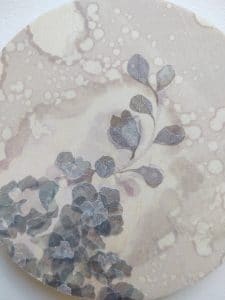
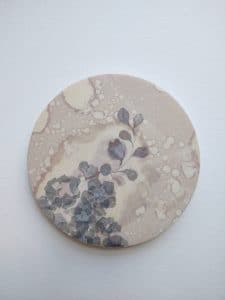
PCI: One last question: If you could have a conversation with any artist present or past, who would it be?
MK: Oh, this is such a difficult question! There are many incredible artists alive right now I want to speak with, and so many in the past who didn’t write their own history that I’d like to speak with. It would be amazing to have a one-on-one conversation with Danielle Krysa, the Jealous Curator, as a fellow collage artist, she’s had so many wonderful conversations with other artists. Listening to her podcasts have been incredibly uplifting and encouraging, particularly when I’ve been in deep places of doubt as a visual artist.
All images thanks to Mimi King!
Mimi will be having a studio sale on Instagram August 17-21 so check it out!
– fricka a.i.r. – our papers help tell your story
